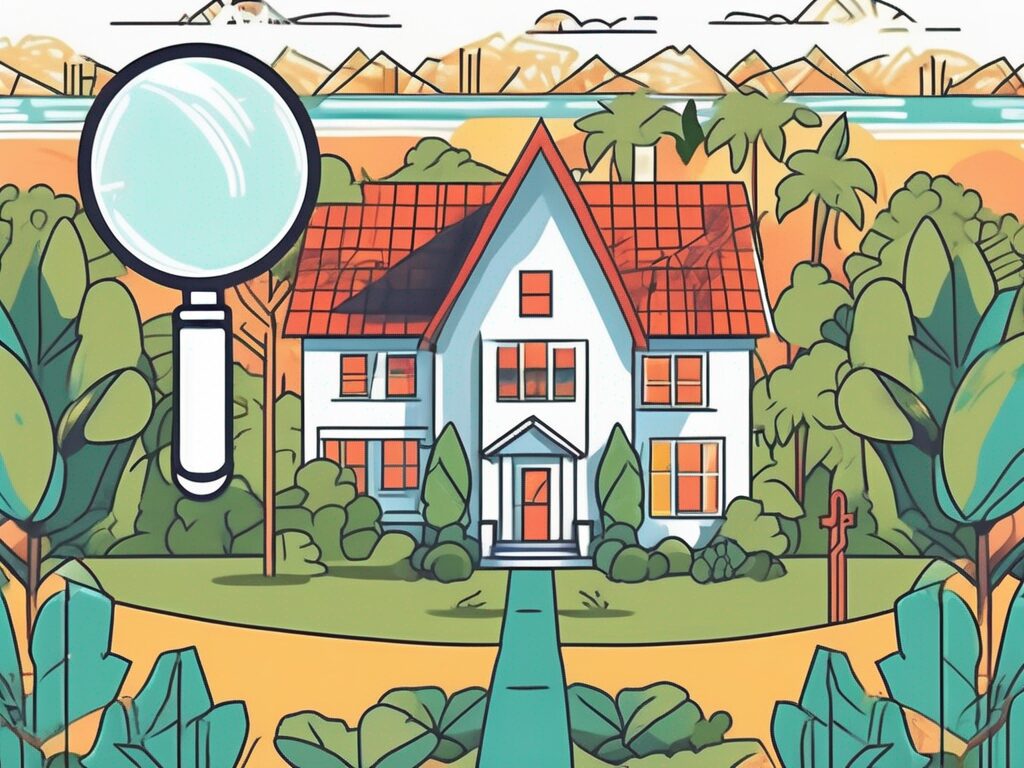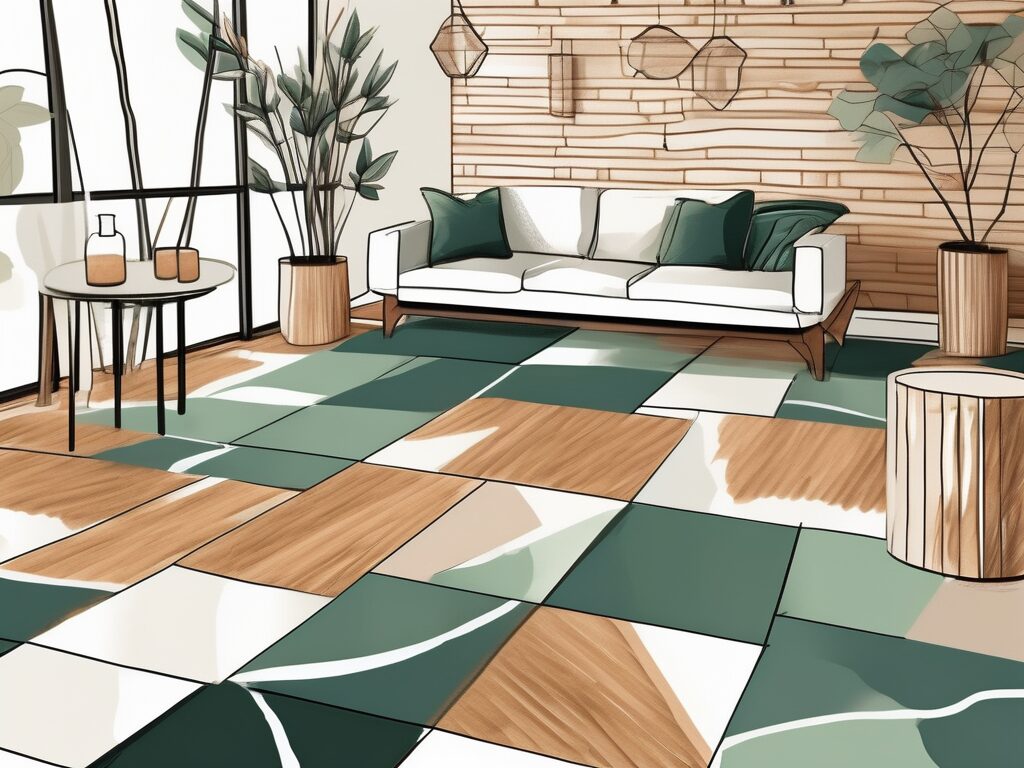
Agent A-Team or Solo Superhero? Finding the Right Real Estate Partner for Your Selling Journey in Wildwood Florida
When it comes to selling your home in Wildwood, Florida,…
January 29, 2024
Sustainable home design is becoming increasingly important as we strive to reduce our carbon footprint and create healthier living spaces. One area where we can make a significant impact is in our choice of flooring. By selecting eco-friendly options, we can not only enhance the beauty of our homes but also contribute to a more sustainable future. In this article, we will explore 12 eco-friendly flooring options that can transform your home into an environmentally conscious haven.
When it comes to sustainable flooring, there are a plethora of choices available. From reclaimed wood to natural fibers, the possibilities are endless. By selecting materials that are renewable, recycled, or low in volatile organic compounds (VOCs), you can minimize the environmental impact of your flooring choices.
One of the most popular eco-friendly flooring options is bamboo. Known for its rapid growth and durability, bamboo is a renewable resource that adds a touch of elegance to any room. Additionally, bamboo flooring is highly resistant to moisture and insects, making it an ideal choice for areas prone to high humidity or pests.
Another sustainable flooring material to consider is cork. Derived from the bark of cork oak trees, cork flooring offers a unique blend of style and sustainability. Not only is cork warm and comfortable underfoot, but it also has natural sound-absorbing properties, making it an excellent choice for reducing noise in your home. Furthermore, cork is highly resistant to mold, mildew, and allergens, making it a healthy option for those with respiratory issues or allergies.
If you’re looking for a more rustic and character-filled flooring option, reclaimed wood is an excellent choice. By repurposing old wood from salvaged buildings or barns, you can create a stunning floor that tells a story. Each plank of reclaimed wood has its own unique history, with knots, saw marks, and other imperfections that add charm and personality to your space. Not only does reclaimed wood flooring contribute to the preservation of natural resources, but it also adds a sense of nostalgia and authenticity to your home.
For a versatile and vibrant flooring option, consider linoleum. Made from natural materials such as linseed oil, wood flour, and cork powder, linoleum is a sustainable choice for eco-conscious homeowners. With its wide range of colors and patterns, linoleum allows you to unleash your creativity and add a pop of personality to any room. Additionally, linoleum is easy to clean and maintain, making it a practical choice for busy households.
When choosing environmentally friendly flooring options, it’s important to consider not only the materials used but also the manufacturing process. Look for certifications such as Forest Stewardship Council (FSC) or FloorScore, which ensure that the products meet strict environmental and indoor air quality standards. By making conscious choices and opting for sustainable flooring, you can create a beautiful and eco-friendly home that benefits both you and the planet.
In addition to choosing eco-friendly flooring materials, maximizing natural light and heat can greatly impact the sustainability of your home. By optimizing the use of sunlight, you can reduce your reliance on artificial lighting and heating sources.
Did you know that natural light has numerous benefits beyond just illuminating your living spaces? Sunlight is a rich source of vitamin D, which is essential for maintaining healthy bones and boosting your immune system. By allowing more natural light into your home, you can improve your overall well-being.
Start by strategically placing windows in areas that receive the most sunlight throughout the day. This will not only allow natural light to flood your living spaces but also provide you with stunning views of the surrounding landscape. Imagine waking up to the sight of a golden sunrise or enjoying a cup of coffee while basking in the warm glow of the afternoon sun.
When it comes to window treatments, consider using light-colored options that allow for better light penetration while still providing privacy. Sheer curtains or blinds made from natural fibers can add a touch of elegance to your home while allowing ample sunlight to filter through. This way, you can enjoy the benefits of natural light without compromising your privacy.
Furthermore, incorporating skylights into your home design can have a transformative effect. These overhead windows not only bring in additional daylight but also act as natural air vents, allowing for improved ventilation. Imagine the gentle breeze and the soft glow of the moonlight streaming through your skylight as you unwind in your cozy living room.
By harnessing the power of natural light, you can reduce energy consumption and create a more sustainable living environment. Sunlight is a free and renewable resource that can significantly reduce your reliance on artificial lighting during the day. Not only will this help lower your electricity bills, but it will also reduce your carbon footprint.
Moreover, natural light has been proven to enhance productivity and boost mood. Imagine working in a bright and airy home office, where the sunlight energizes you and keeps you focused throughout the day. By maximizing natural light, you can create a space that promotes creativity, productivity, and overall well-being.
So, whether you are designing a new home or renovating your existing space, remember to prioritize natural light. Embrace the beauty and benefits of sunlight, and let it illuminate your home and your life.
When it comes to sustainable interior design, don’t neglect your walls. By using eco-friendly tiles, you can add visual interest while also reducing your environmental impact.
Did you know that the materials you choose for your walls can have a significant impact on the overall sustainability of your home? It’s true! That’s why eco-conscious homeowners are turning to eco-friendly tiles to enhance their living spaces.
One popular option for eco-friendly wall tiles is recycled glass tiles. These tiles are not only stylish but also environmentally friendly. They are made from post-consumer glass, which is crushed and processed into beautiful, durable tiles.
Recycled glass tiles come in a wide range of colors and patterns, allowing you to create a unique and visually stunning wall design. Whether you prefer a sleek and modern look or a more rustic and textured feel, there is a recycled glass tile option that will suit your style.
But the benefits of recycled glass tiles go beyond their aesthetic appeal. By choosing these tiles, you are diverting waste from landfills and reducing the demand for new raw materials. This means that you are not only adding beauty to your home but also making a positive impact on the environment.
Another eco-friendly option for your walls is ceramic tiles made from recycled materials. These tiles offer the same durability and stylish appearance as traditional ceramics but with a reduced carbon footprint. By choosing eco-friendly wall tiles, you can elevate your home design while minimizing your impact on the environment.
When it comes to installation, eco-friendly tiles are no different from traditional tiles. They can be installed using the same methods and techniques, making it easy to incorporate them into your design plans. Whether you are remodeling your entire home or just updating a single room, eco-friendly tiles can be a great addition to your sustainable interior design.
So, why not take a step towards a more sustainable future by enhancing your walls with eco-friendly tiles? Not only will you be adding beauty and style to your home, but you will also be making a positive impact on the environment. Choose recycled glass or ceramic tiles made from recycled materials and let your walls tell a story of sustainability and elegance.
Insulation plays a crucial role in creating an energy-efficient home. By properly insulating your walls, floors, and ceilings, you can reduce heat loss, lower energy consumption, and create a more comfortable living environment.
When it comes to choosing insulation materials, there are various options available in the market. One sustainable and effective alternative to traditional fiberglass insulation is denim insulation. Made from recycled cotton fibers, denim insulation offers excellent thermal performance and sound absorption capabilities.
Denim insulation not only helps in keeping your home warm during winter but also keeps it cool in summer. Its high thermal resistance helps in maintaining a consistent temperature inside your home, reducing the need for excessive heating or cooling. This, in turn, leads to lower energy bills and a reduced carbon footprint.
One of the major advantages of denim insulation is its eco-friendliness. By using recycled cotton fibers, denim insulation helps in reducing waste and conserving natural resources. It also eliminates the need for harmful chemicals that are often found in traditional insulation materials.
Furthermore, denim insulation requires less energy to produce compared to other insulation materials. The manufacturing process involves shredding and treating recycled denim, which consumes less energy and emits fewer greenhouse gases. By choosing denim insulation, you are not only making your home more energy-efficient but also contributing to a more sustainable future.
Denim insulation is a sustainable and effective alternative to traditional fiberglass insulation. Made from recycled cotton fibers, denim insulation offers excellent thermal performance and sound absorption capabilities. Additionally, it is free from harmful chemicals and requires less energy to produce. By insulating your home with denim, you can keep it warm in winter, cool in summer, and contribute to a more sustainable future.
When it comes to insulation, it’s important to consider not only its effectiveness but also its impact on the environment. Denim insulation checks both boxes, providing you with a solution that is both eco-friendly and efficient.
So, why not make the switch to denim insulation and enjoy the benefits it offers? Not only will you be creating a more comfortable living space for yourself and your family, but you will also be taking a step towards reducing your carbon footprint and promoting a greener future.
Windows are a significant source of heat gain and loss in a home. By upgrading to energy-efficient windows, you can reduce energy consumption and create a more comfortable living space.
When it comes to upgrading your windows, one option that stands out is double pane windows. These windows, also known as insulated glass windows, consist of two panes of glass with a space filled with gas between them. This design helps to minimize heat transfer, providing better insulation and noise reduction.
But what exactly are the advantages of double pane windows for your home? Let’s take a closer look.
1. Enhanced Insulation: The main advantage of double pane windows is their ability to provide superior insulation. The air or gas-filled space between the panes acts as an additional barrier, reducing the amount of heat that can pass through the glass. This means that during the hot summer months, less heat will enter your home, keeping it cooler and reducing the load on your air conditioning system. Similarly, during the cold winter months, less heat will escape from your home, resulting in lower heating bills.
2. Noise Reduction: In addition to their insulation properties, double pane windows also offer excellent noise reduction. The two layers of glass, along with the gas-filled space, help to dampen outside noise, creating a quieter and more peaceful indoor environment. This is particularly beneficial if you live in a noisy neighborhood or near a busy street.
3. Low-E Coatings: Many double pane windows come with low-emissivity (low-E) coatings. These coatings are designed to reflect heat back into your home during the winter and reflect it away during the summer. By reducing the amount of heat transfer through the glass, low-E coatings further enhance the energy efficiency of double pane windows.
4. UV Protection: Double pane windows with low-E coatings also provide protection against harmful ultraviolet (UV) rays. These coatings can block up to 99% of UV radiation, which can fade and damage your furniture, flooring, and other belongings over time. By installing double pane windows with low-E coatings, you can help preserve the color and quality of your interior furnishings.
5. Increased Home Value: Energy-efficient upgrades, such as double pane windows, can significantly increase the value of your home. Potential buyers are increasingly looking for properties with energy-saving features, and having energy-efficient windows can make your home more attractive to potential buyers when it’s time to sell.
Investing in double pane windows is not only a smart financial decision but also a sustainable choice. By reducing your energy consumption, you can lower your carbon footprint and contribute to a greener future.
So, if you’re looking to upgrade your windows, consider the advantages of double pane windows. With their enhanced insulation, noise reduction, low-E coatings, UV protection, and increased home value, double pane windows can provide long-term benefits for your home and the environment.
While often overlooked, the garage can be a significant source of energy loss in a home. By insulating your garage doors, you can improve energy efficiency and create a more sustainable living environment.
An insulated garage door acts as a barrier against heat transfer, preventing cold air from entering your home during winter and hot air from infiltrating during summer. This helps to maintain a more stable temperature in your garage, reducing the need for additional heating or cooling. By investing in an insulated garage door, you can not only save energy but also lower your utility bills.
Solar energy is a clean, renewable source of power that can significantly reduce your reliance on traditional energy sources. By installing solar panels on your home, you can generate electricity and contribute to a greener future.
Solar panels harness the power of the sun to generate electricity without producing harmful emissions. By utilizing this renewable energy source, you can not only reduce your carbon footprint but also save money on your energy bills. Additionally, some countries offer incentives and tax credits for homeowners who invest in solar energy, further enhancing its financial viability. By embracing solar energy, you can take a proactive step towards a more sustainable home.
Water heating is an essential part of daily life, but it can also be a significant energy consumer. By opting for eco-friendly water heating solutions, you can reduce energy consumption and create a more sustainable home.
Solar hot water systems utilize the sun’s energy to heat water for domestic use. By installing solar collectors on your roof, you can harness the power of the sun to heat water without relying on traditional energy sources. Another eco-friendly option is tankless water heaters, which provide hot water on demand. Unlike traditional storage tank water heaters, tankless models only heat water as it is needed, reducing standby energy losses. By embracing eco-friendly water heating solutions, you can reduce both your energy consumption and your utility bills.
By implementing these eco-friendly flooring options, maximizing natural light and heat, upgrading your windows, insulating your home, harnessing the power of solar energy, and embracing eco-friendly water heating solutions, you can transform your home into a sustainable sanctuary. Not only will you create a healthier living environment, but you will also make a positive impact on the planet. With countless options available, there has never been a better time to embark on a journey towards sustainable home design.

If you want the Richr team to help you save thousands on your home just book a call.
 Book a call
Book a call